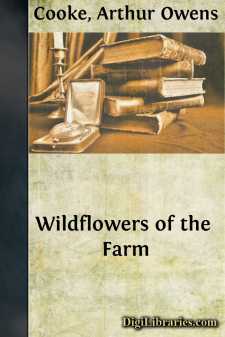Categories
- Antiques & Collectibles 13
- Architecture 36
- Art 48
- Bibles 22
- Biography & Autobiography 813
- Body, Mind & Spirit 142
- Business & Economics 28
- Children's Books 17
- Children's Fiction 14
- Computers 4
- Cooking 94
- Crafts & Hobbies 4
- Drama 346
- Education 46
- Family & Relationships 57
- Fiction 11829
- Games 19
- Gardening 17
- Health & Fitness 34
- History 1377
- House & Home 1
- Humor 147
- Juvenile Fiction 1873
- Juvenile Nonfiction 202
- Language Arts & Disciplines 88
- Law 16
- Literary Collections 686
- Literary Criticism 179
- Mathematics 13
- Medical 41
- Music 40
- Nature 179
- Non-Classifiable 1768
- Performing Arts 7
- Periodicals 1453
- Philosophy 64
- Photography 2
- Poetry 896
- Political Science 203
- Psychology 42
- Reference 154
- Religion 513
- Science 126
- Self-Help 84
- Social Science 81
- Sports & Recreation 34
- Study Aids 3
- Technology & Engineering 59
- Transportation 23
- Travel 463
- True Crime 29
Wildflowers of the Farm
Description:
Excerpt
CHAPTER I
INTRODUCTION
I think that some of you have been with me at Willow Farm before to-day. When we were there we went into the farmer's fields in early spring, and saw the men and horses at work with ploughs and harrows. A little later on we saw some of the crops sown, such as barley and turnips. In summer we were in the hay-and corn-fields, and later still we saw the ricks being made.
To-day we are at Willow Farm again, and I want to show you some of the flowers that grow there. I do not mean those which Mrs. Hammond, the farmer's wife, grows in her garden, pretty as they are. We will look rather at the wild flowers in the fields, the hedges, and by the road-side in the lane. No one sows their seed nor takes care of them in any way; yet they grow and blossom year after year, and nearly all of them are beautiful.
Before we begin to look at them we must make sure that we quite understand just what a flower is. Even those of you who live in large towns and have perhaps never been in the country, see flowers of some sort, I feel sure; you see them in shop windows and they are also often sold in the streets. You have seen wallflowers and daffodils in the spring, roses in the summer, violets in winter, as well as other kinds. You do not need to be told that these are flowers.
What about the grass on lawns, and in such places as Battersea Park and Hyde Park in London? "Oh," you say, "that is not a flower at all--that is just grass." Yes, it is grass, but the grass has a flower as well as a rose bush or a violet-plant. It is only because the grass is kept cut short that you do not see its flower on a lawn. If grass is not cut, or eaten by animals, it grows tall in spring; then in May or June you would see the flowers on tall straight stems which stand among the blades of grass. Many of these grass flowers are very beautiful and we will look presently at some of them in one of the farmer's fields.
Perhaps some of you have gardens or grass plots at your own homes. If you see some dandelions in the lawn, or groundsel among the flowers or vegetables in the garden beds, you say, "Those weeds must be pulled up." You call the Dandelion and the Groundsel weeds, but they have flowers all the same; the Dandelion is perhaps one of the most lovely yellow flowers that we have.
They are weeds certainly in your lawn or garden beds, for they ought not to be there. Weeds are plants in the wrong place. By and by, in the farmer's fields, we shall see many pretty flowers which he calls weeds. We speak of the Nettle as a weed, and do not usually admire it; yet the Nettle has a flower, as we shall see.
Then what do you think of a tree having a flower? That is perhaps a new idea to you. Yet if you look at a Horse-chestnut tree in June you will see at once the large spikes of beautiful white flowers with which it is covered. Apple trees have a beautiful pink, or pink and white flower, and the Almond tree bears a lovely pink flower. All other trees have flowers too, but they are often small....


